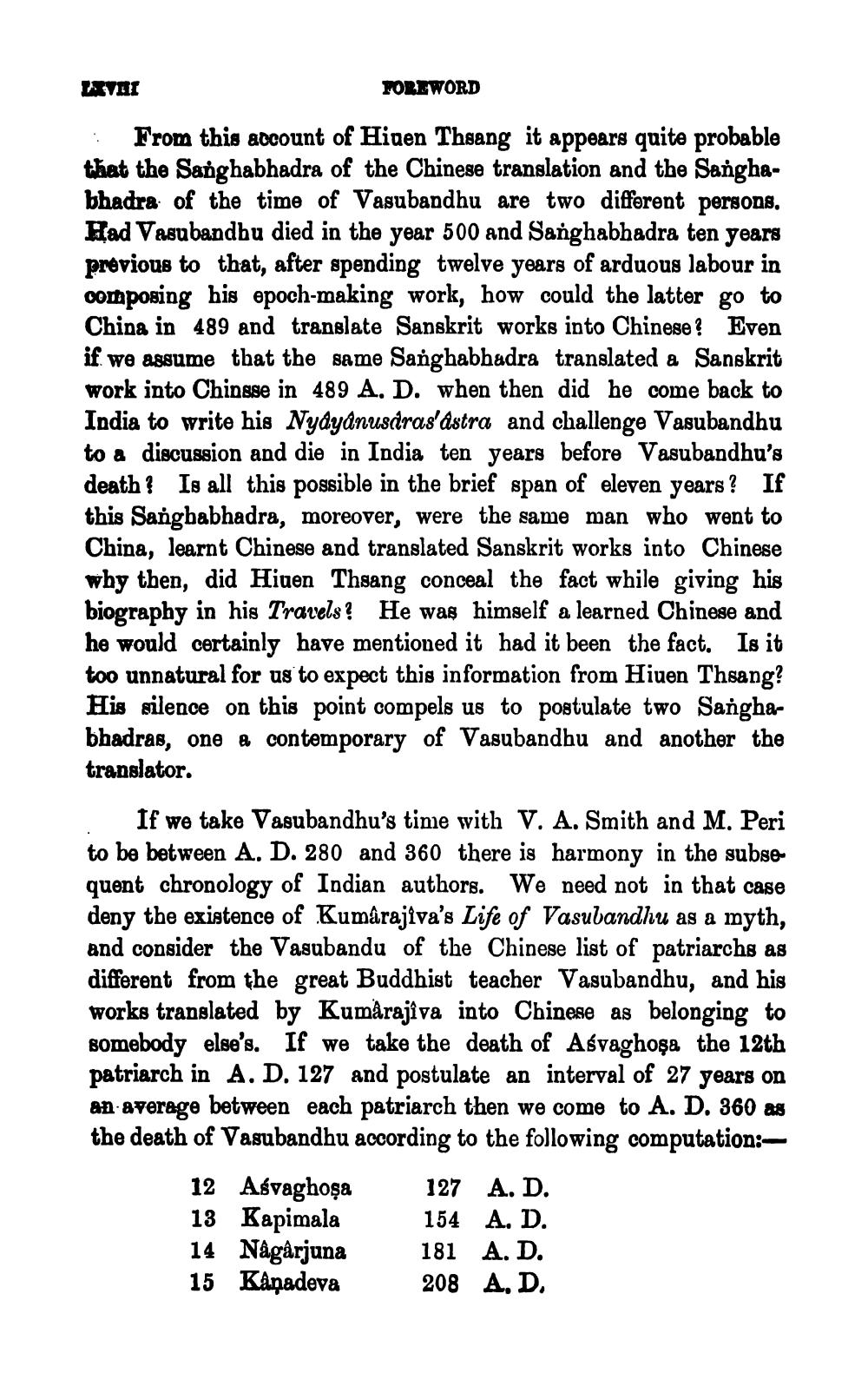________________
POREWORD
: From this account of Hinen Thsang it appears quite probable that the Sanghabhadra of the Chinese translation and the Sanghabhadra of the time of Vasubandhu are two different persons, Had Vasubandbu died in the year 500 and Sanghabhadra ten years previous to that, after spending twelve years of arduous labour in composing his epoch-making work, how could the latter go to China in 489 and translate Sanskrit works into Chinese ? Even if we assume that the same Sanghabhadra translated a Sanskrit work into Chingse in 489 A. D. when then did he come back to India to write his Nydyánusdras'astra and challenge Vasubandhu to a discussion and die in India ten years before Vasubandhu's death? Is all this possible in the brief span of eleven years? If this Sangbabhadra, moreover, were the same man who went to China, learnt Chinese and translated Sanskrit works into Chinese why then, did Hiuen Thsang conceal the fact while giving his biography in his Travels? He was himself a learned Chinese and he would certainly have mentioned it had it been the fact. Is it too unnatural for us to expect this information from Hiuen Thsang? His silence on this point compels us to postulate two Sanghabhadras, one a contemporary of Vasubandhu and another the translator.
If we take Vasubandhu's time with V. A. Smith and M. Peri to be between A. D. 280 and 360 there is harmony in the subse quent chronology of Indian authors. We need not in that case deny the existence of Kumârajiva's Life of Vasubandhu as a myth, and consider the Vasubandu of the Chinese list of patriarchs as different from the great Buddhist teacher Vasubandhu, and his works translated by Kumârajiva into Chinese as belonging to somebody else's. If we take the death of Ašvaghoşa the 12th patriarch in A. D. 127 and postulate an interval of 27 years on an average between each patriarch then we come to A. D. 360 as the death of Vasubandhu according to the following computation:
12 Asvaghoşa 127 A.D. 13 Kapimala 154 A, D. 14 Nagarjuna 181 A. D. 15 Kanadeva 208 A, D.




